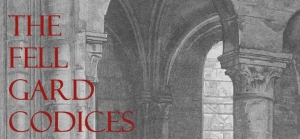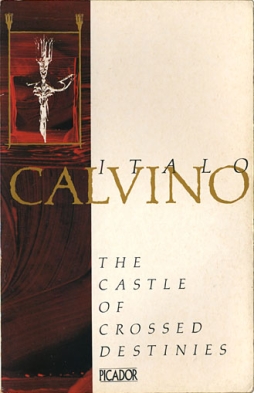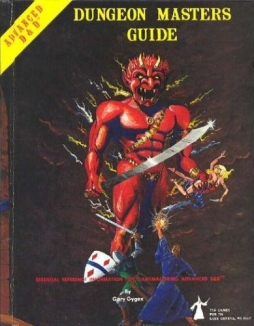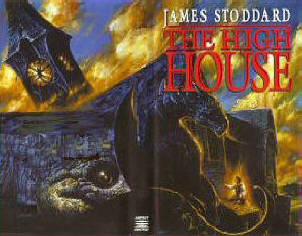Self-Publishing: What I’m Doing, and Why
 There’s been a lot of talk around the blogosphere lately about self-publishing, and its merits relative to traditional publishing. I’m not going to say anything about that, as such. But it seems obvious to me that self-publishing has a value if you have a story that could not, due to the nature of its form, be published traditionally.
There’s been a lot of talk around the blogosphere lately about self-publishing, and its merits relative to traditional publishing. I’m not going to say anything about that, as such. But it seems obvious to me that self-publishing has a value if you have a story that could not, due to the nature of its form, be published traditionally.
Which brings me to an announcement: I’m beginning a self-publishing venture of my own, The Fell Gard Codices. It’s an ongoing fantasy serial, and the first chapter goes live Wednesday, June 1. The web site’s already up, at Fellgard.com. I’ll be posting chapters every day for six days, and after that putting up three chapters a week, on Mondays, Wednesdays, and Fridays. The serial is free through the web site, though readers can donate through PayPal, if they’re so inclined; and once I have enough material, I’ll be selling collections as ebooks.
So, given how I started this post, the questions become: why am I doing this? What is it about this story that makes this approach seem like a good idea?
 I’d always been fascinated by stories built out of randomness; or, if you prefer, out of oracular systems. Philip K. Dick supposedly wrote The Man in the High Castle by consulting the I Ching. Italo Calvino wrote a book called Il castello dei destini incrociati (The Castle of Crossed Destinies) by using the tarot. I wanted to try something like that; I wanted to use a system to provide me with random points of inspiration, and then work those points into a story.
I’d always been fascinated by stories built out of randomness; or, if you prefer, out of oracular systems. Philip K. Dick supposedly wrote The Man in the High Castle by consulting the I Ching. Italo Calvino wrote a book called Il castello dei destini incrociati (The Castle of Crossed Destinies) by using the tarot. I wanted to try something like that; I wanted to use a system to provide me with random points of inspiration, and then work those points into a story.
I realised that I actually had an analogous system to hand, in the form of Dungeons & Dragons. The 1st Edition Dungeon Master’s Guide has charts for randomly creating dungeons. The placement of corridors and rooms, and the placement of monsters and treasures in those rooms, could be determined with a few dice rolls. I mixed the D&D system with clones like OSRIC, spiced it with what I’d learned from Roguelike games such as Angband, then expanded the whole set of charts, changing them considerably. I dropped all the pre-existing intellectual property — creating my own monsters, magic, treasure, and so on. Doing that started to tell me about the world. And then I decided on the background for a near-infinite dungeon complex: Fell Gard, created by a wizard as a step in his ascension to godhood. Every century or so it grows yet larger, and draws in travellers and creatures …
Unintentionally, I’d created a background which suggested certain things for the story. The characters hadn’t deliberately entered the dungeon looking for wealth; they’d been pulled in. So some of them wanted out. On the other hand, some of them had come to the area of the dungeon looking for one thing or another; maybe those things were in the dungeon. And the dungeon itself: if it’s been expanding for hundreds of years, and it’s not that easy to get out (or else where’s the drama for the characters caught inside it?), then the place must have its own society. Or societies, plural. In fact, it’s large enough, and old enough, whole empires may have risen and fallen in Fell Gard. Cities may have been established in particularly large caverns. And what would such a place look like, if magic and wealth may be found anywhere?
 And then what about the practical issues? Where does the food and water come from? How about cloth? How about paper? I found answers for these questions, but I realised in doing so I was looking at a distinct fantasy environment; owing a bit to predecessors like Peake’s Gormenghast and (perhaps especially) James Stoddard’s The High House, but with, I thought, a distinct feel of its own.
And then what about the practical issues? Where does the food and water come from? How about cloth? How about paper? I found answers for these questions, but I realised in doing so I was looking at a distinct fantasy environment; owing a bit to predecessors like Peake’s Gormenghast and (perhaps especially) James Stoddard’s The High House, but with, I thought, a distinct feel of its own.
So I developed characters, and put together a rule system to continue the randomness of the process, so that combat and the like could be determined by dice rolls as well. Then I started the characters in the dungeon, and followed what happened to them. And I was duly surprised.
I still thought I was writing an adventure story. And indeed there is adventure in what I’ve written so far. But there’s a lot of character-oriented writing, I feel. Fight scenes happen, but I don’t think they overwhelm or define the story. It’s all going in unpredictable, exciting directions.
I suspected when I started that the project would be a challenge; to take a confused random mess of results, and turn them into a coherent story, with consistently developing characters and themes, and some kind of overarching plot. What I’ve found is that it’s been much more like a collaboration with the dice. They’ve presented me with some fascinating results, which have already produced story elements and story directions I never would have imagined on my own.
 Obviously, I’m working a goodly number of chapters ahead. And, yes, that has given me the chance to go back and change things in earlier chapters according to later developments. But those changes haven’t been motivated by dice rolls. They’ve come mainly from research I’ve been doing into the medieval period, as I try to gain a better grasp of the era, and develop the world which produced Fell Gard — because the characters bring their backgrounds into the dungeon with them, and their choices are shaped by their experiences and what they know.
Obviously, I’m working a goodly number of chapters ahead. And, yes, that has given me the chance to go back and change things in earlier chapters according to later developments. But those changes haven’t been motivated by dice rolls. They’ve come mainly from research I’ve been doing into the medieval period, as I try to gain a better grasp of the era, and develop the world which produced Fell Gard — because the characters bring their backgrounds into the dungeon with them, and their choices are shaped by their experiences and what they know.
As I developed the idea for The Fell Gard Codices and began writing, I had my self-publishing format already in mind — web serialisation, then ebook collections. It seems to me something like Fell Gard is probably unpublishable through traditional channels, just because it is entirely random. I have no idea how long the story will go (though I think it’ll probably be a good while), I don’t know what major plot turns it’ll take, and I can’t outline more than a few chapters ahead with any certainty. And as smooth as it’s seemed so far, there is certainly an element of performance to it; I may just fall on my face. Who’d be interested in taking on publishing something like that, especially from an unknown writer?
 Hence self-publishing. It seems to me that this is a project that can take advantage of new publishing options, and new ways to connect with readers. The structure of the story is meant not only to take advantage of the emotional investment you get from a serial, but new possibilities of form that the web offers.
Hence self-publishing. It seems to me that this is a project that can take advantage of new publishing options, and new ways to connect with readers. The structure of the story is meant not only to take advantage of the emotional investment you get from a serial, but new possibilities of form that the web offers.
At least, that’s the theory. So far, I’m optimistic. More than that, I’m hooked. I want to see what happens next. I want to learn what’s deeper in the dungeon. I want to see how the plot threads that I’ve rolled up resolve themselves. I want to write, and keep writing until I get to the end.
I want to thank John O’Neill and C.S.E. Cooney, who’ve been supportive and gracious enough to give me valuable feedback on the general approach to the project — and who’ve encouraged me to write about it on the Black Gate website. I’ll be discussing the project some more next week, and then further as events warrant. In the meantime, I’d love to hear any feedback, criticism, or questions you may have, here or at Fellgard.com.
Matthew David Surridge is the author of “The Word of Azrael,” from Black Gate 14. His blog is Hochelaga Depicta.
Well said, and I think the project sounds awesome [although time consuming]. How do you intend to keep up with this schedule? Will there be a word limit per chapter?
Sounds interesting. Although your general plan (the random novel) sounds similar to manga. Hiro Mashima has stated in interviews that he rarely plans ahead with Fairy Tail, and I’m sure other artists work in the same manner.
I love this idea, and it seems like just the sort of seat-of-your-pants storymaking that is sadly absent from the lives of most writers. Best of luck with it, eager to see how it shapes up.
Thanks for the good words!
Scott: The chapters are going to be from 2000 to 4000 words. So far they seem to average about 3000 or 3500, and they fell like they’re a natural length.
I’m fortunate enough that I’m able to scrape by as a freelancer while still having a considerable amount of time — which is now all going into Fell Gard. I seem to be producing at a decent rate; frankly, I think I can write faster. Part of the aim of the schedule is to force me to keep producing, to get into the flow of the creativity. It’s a less frenetic pace than, say, NaNoWriMo, so I do have time to revise and edit. Worst comes to worst, I’ll reduce the schedule to two chapters a week, but I hope that won’t be necessary.
Sftheory: Yes, you’re absolutely right. I think a lot of writers in comics do this sort of thing. Maybe not so much in contemporary American mainstream books, which have to be planned out well ahead these days, but maybe you could see it in Kirby’s Fourth World books, say.
Bill: Thanks! Yeah, this is really an attempt to break away from consciously overthinking things. We’ll see how it goes — starting tomorrow!
… And by tomorrow I mean “June 1”. Which is actually only tomorrow now. I’ve edited the post to reflect the fact that I’ve just looked at a calendar. Apologies for any confusion.
Best of luck with the experiment! Your essays here have been so much fun, I’ll definitely check out whatever you come up with at fellguard.com
Calvino is one of my big early influences. Probably none of the structural things Calvino cared about stuck for me, but Invisible Cities had a huge effect on my worldbuilding. One of the times I read The Castle of Crossed Destinies, I followed the Tarot spread with my own deck, in part to see how different the story would have been if Calvino and his characters had been working with a Rider-Waite-based deck.
The only time I used an RPG as a writing tool, though, was when one of my beta readers complained that some of my characters were “built on too many points,” and he challenged me to model the most extreme case in GURPS on fewer than 300 points. It was a very useful exercise, one I’d recommend to any writer already conversant with GURPS.
Thanks, Sarah! I hope you enjoy the story. One thing: the address is Fellgard.com, with no ‘u’. The idea is that it’s “Fell,” as “of terrible evil or ferocity; deadly,” along with “Gard,” a variant of “Garth,” a word which went one way to become “garden” and another to become “yard.” It basically means “an enclosed yard;” you can see it in Norse myth: As-gard, Asgardr, “enclosure of the Æsir,” Mid-gard, Midgardr, “Middle Enclosure.”
I’m hoping that using the “Gard” form recalls those words, since the dungeon’s theoretically as big as a whole world (although that’d be a lot of dice rolling). The drawback, of course, is that Gard could be confused with Guard. One pays one’s money (for a domain name, in this case), and one takes one’s chance.
And I will admit that I haven’t yet read The Castle of Crossed Destinies. It’s high on my list; I’ve read Invisible Cities, and loved it, and If On A Winter’s Night A Traveller, which I didn’t care for as much. Did you find things were different with a different deck?
Completely different. At the risk of Tarot-geeking, Calvino used an old-style deck, pretty similar to the Marseilles deck, with Minor Arcana only slightly more ornate than playing cards. The Rider-Waite deck was a watershed–it’s basically what turned the Tarot into its own artistic genre. A Rider-Waite-influenced deck is just plain better for meditation and divination than a Marseilles-style deck, but it’s not as visually flexible for Calvino’s purposes.